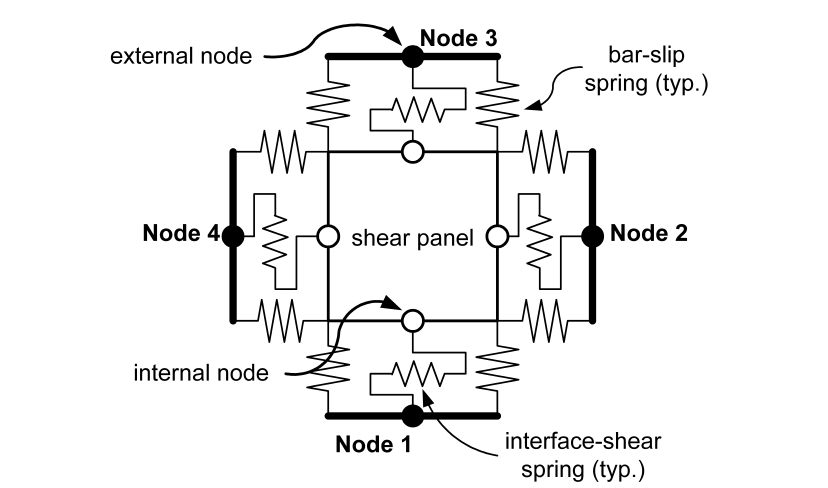Joint2D Element
- Command_Manual
- Tcl Commands
- Modeling_Commands
- model
- uniaxialMaterial
- ndMaterial
- frictionModel
- section
- geometricTransf
- element
- node
- sp commands
- mp commands
- timeSeries
- pattern
- mass
- block commands
- region
- rayleigh
- Analysis Commands
- Output Commands
- Misc Commands
- DataBase Commands
This command is used to construct a two-dimensional beam-column-joint element object. The two dimensional beam-column joint is idealized as a parallelogram shaped shear panel with adjacent elements connected to its med-points. The midpoints of the parallelogram are referred to as external nodes. These nodes are the only analysis components that connect the joint element to the surrounding structure.
| element Joint2D $eleTag $Nd1 $Nd2 $Nd3 $Nd4 $NdC <$Mat1 $Mat2 $Mat3 $Mat4> $MatC $LrgDspTag |
| $eleTag | unique element object tag |
| $Nd1 $Nd2 $Nd3 $Nd4 | integer tags indicating four external nodes where the joint element is connected to the adjoining beam-column element |
| $NdC | integer tags indicating the central node of beam-column joint (the tag is used to generate the internal node, thus, the node should not exist in the domain) |
| $Mat1 | uniaxial material tag for rotational spring at node 1 (optional) |
| $Mat2 | uniaxial material tag for rotational spring at node 2 (optional) |
| $Mat3 | uniaxial material tag for rotational spring at node 3 (optional) |
| $Mat4 | uniaxial material tag for rotational spring at node 4 (optional) |
| $MatC | uniaxial material tag for rotational spring of the central node |
| $LrgDspTag | tag for the large deformation condition: |
| 0 - for small deformations and constant geometry | |
| 1 - for large deformations and time varying geometry | |
| 2 - for large deformations ,time varying geometry and length correction |
NOTES:
The nodes must be located such that the main chords bisect. The node tags shall be entered in a clockwise or counter-clockwise order.
REFERENCES:
Arash Altoontash, 2004, "Simulation and damage models for performance assessment of reinforced concrete beam-column joints", PhD Dissertation, Stanford University, California, USA. [1]
Code Developed by: Nilanjan Mitra, Cal Poly
